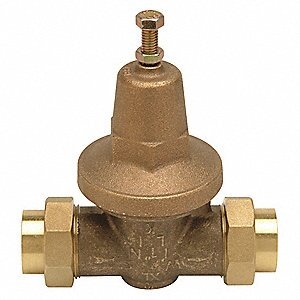To serve you better, we've assembled a list of our customers' most frequently asked questions. If you don't find your answer here, feel free to contact us.
How could I have used this much water?
The majority of residents now have electronic smart meters, which are highly accurate and will provide alerts if leaks are present. Since these meters register every drop of water that flows through them and do not lose accuracy with age, even small water flows from leaky toilets or dripping faucets are captured. These sorts of small and sometimes unnoticeable leaks can add up to a surprising quantity of water if left unaddressed.
Toilets are often one of the biggest culprits of high water usage. For instance, an average leaky toilet can waste about 200 gallons of water per day. Over a month, that adds up to 6,000 gallons at the cost of nearly $63 for just one leaky toilet! Toilet leaks are often silent and can be intermittent, allowing leaks to go undetected for extended periods. To determine if your toilet is leaking, try this trick: Flush to empty the water in the bowl. Next, add a couple of drops of food coloring to the toilet tank and let it sit. If there is a leak, the color will appear in the bowl within 60 minutes. Flush the remaining color from the tank as soon as the test is complete.
If you do not yet have a smart meter, there is a chance the numbers on your water meter may have been incorrectly read, written down wrong, or mistyped into the computer system. This is an easy fix with a simple phone call to the office!
Bottom line, if your reading is higher than usual, feel free to give us a call, and we'll help you investigate possible causes!
What do I do if I am experiencing low pressure?

First, check your meter and the surrounding area for possible leaks. If no large leaks appear present, have your plumber check your pressure-reducing valve. This bell-shaped metal part is located on your main water line, generally just after it enters your home--somewhere before the water heater. These parts do eventually fail and need to be replaced.
Why is my water discolored?
A repair could have been completed recently, allowing air to enter the line and causing a milky look. If your water has a brownish tint, sediment from older pipes may have been stirred up. To correct either problem, let the water run for a few minutes to clear the line. If you're finding discoloration at only one tap, remove the screen on the faucet head and check for debris.
What chemicals are added to our water?
Only chemicals that the National Safety Foundation approves are used for the treatment of drinking water. Lake Junaluska Assembly Public Works adds nothing to the water ourselves. Our water is purchased from the Town of Waynesville who sources water from the Waynesville Reservoir. Once the water is treated, it is distributed throughout Waynesville, Lake Junaluska, Junaluska Sanitary District, and the Town of Clyde.
Why does debris come out of the faucet when running hot water?
Most likely, your water heater needs to be flushed. CAUTION: Most manufacturers recommend hiring a professional to flush your water heater. If you plan to do this yourself, read the owner's manual to avoid personal injury and/or damage to the water heater.
Why is there water coming out of the white pipe in my yard?
This white pipe is your sewer clean-out. It works like an over-flow valve to protect your home from a sewer backup. If there is a clog in the main sewer line, the sewage will pop off the white cap and over-flow this pipe instead of flooding your basement or shower drains! Sewage backups occur when paper towels, wipes, baby diapers, grease, and other materials get caught on roots, uneven connections between pipes, and other obstructions. If you see anything coming out of one of these white pipes, call the APW office or the after-hours emergency line to report a sewer leak. The crew will promptly respond to clean the mess and break up the clog causing the problem.
Why do I have a previous balance when I know I sent in my payment?
We may have received your payment on or after the day we began processing new bills, or we may not have received it at all. Call our office, and we will help you solve the problem.

